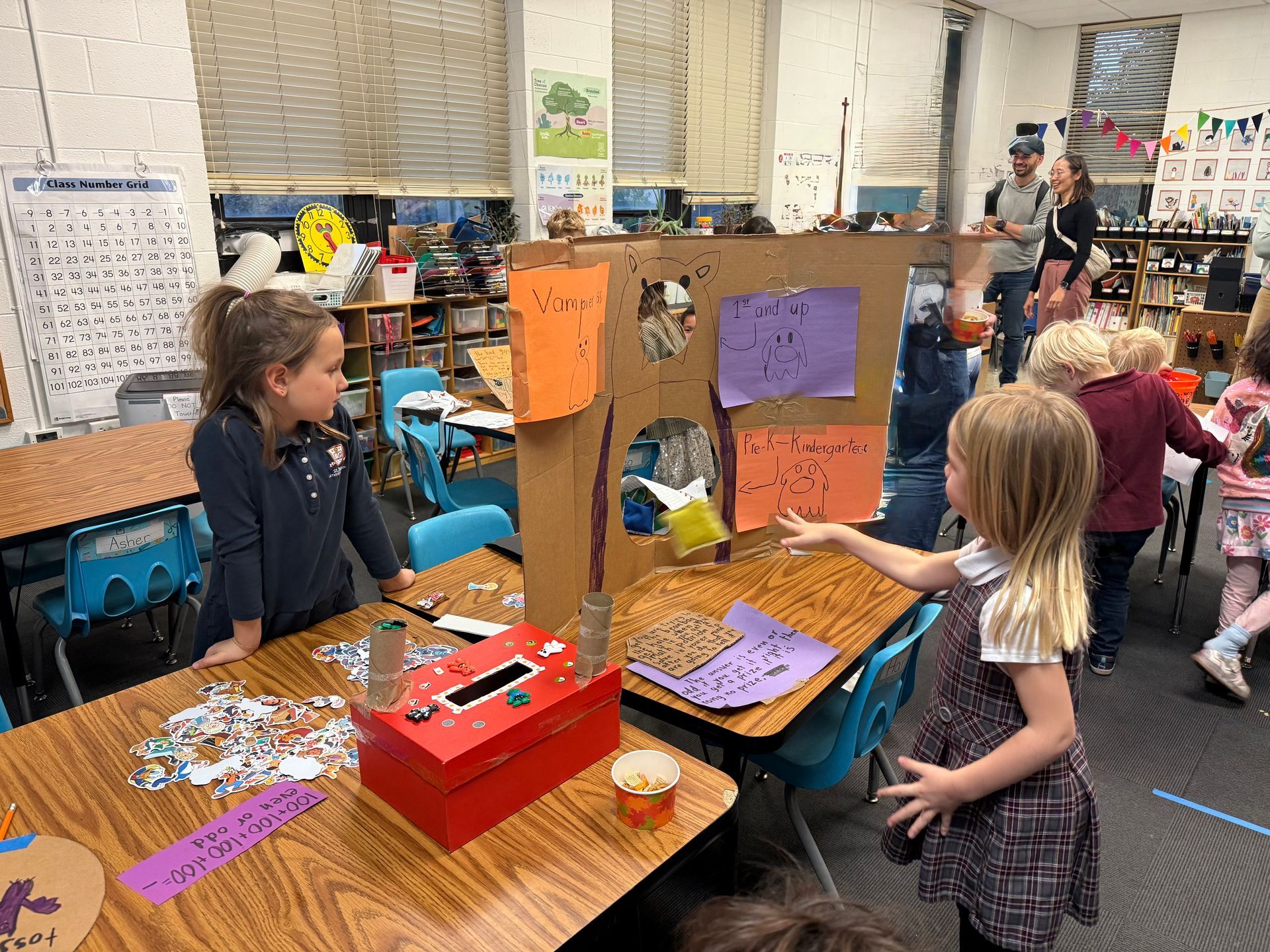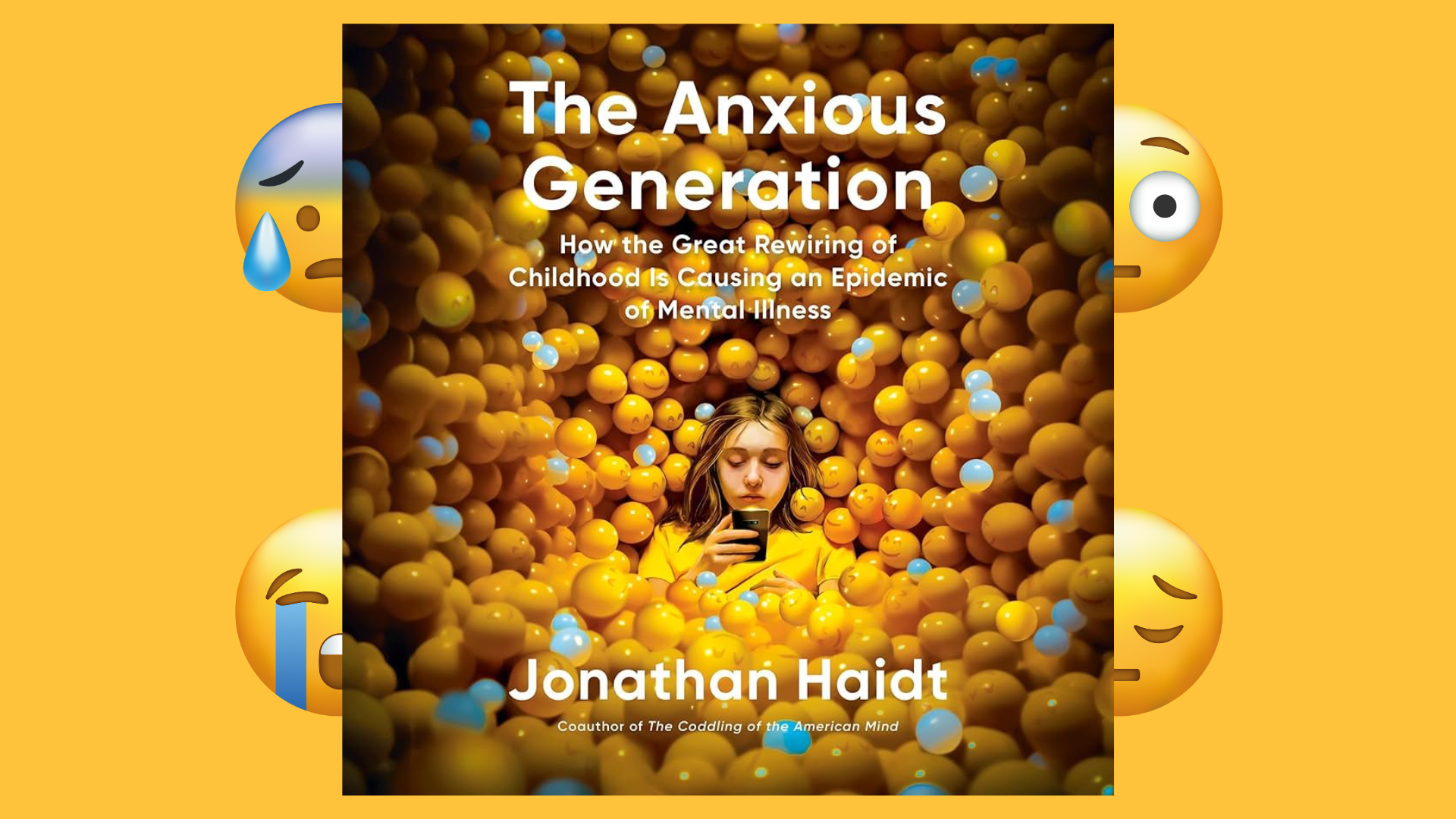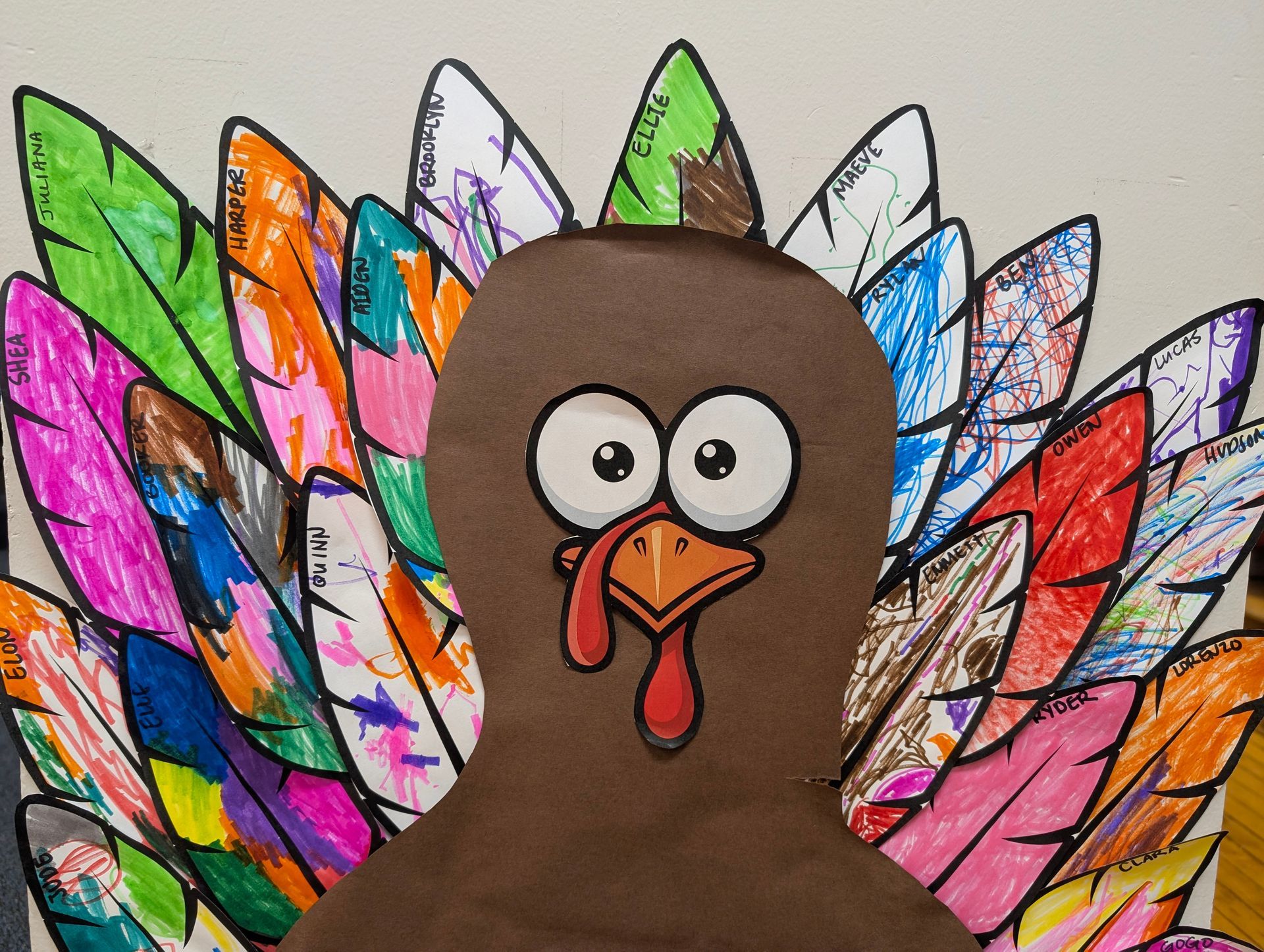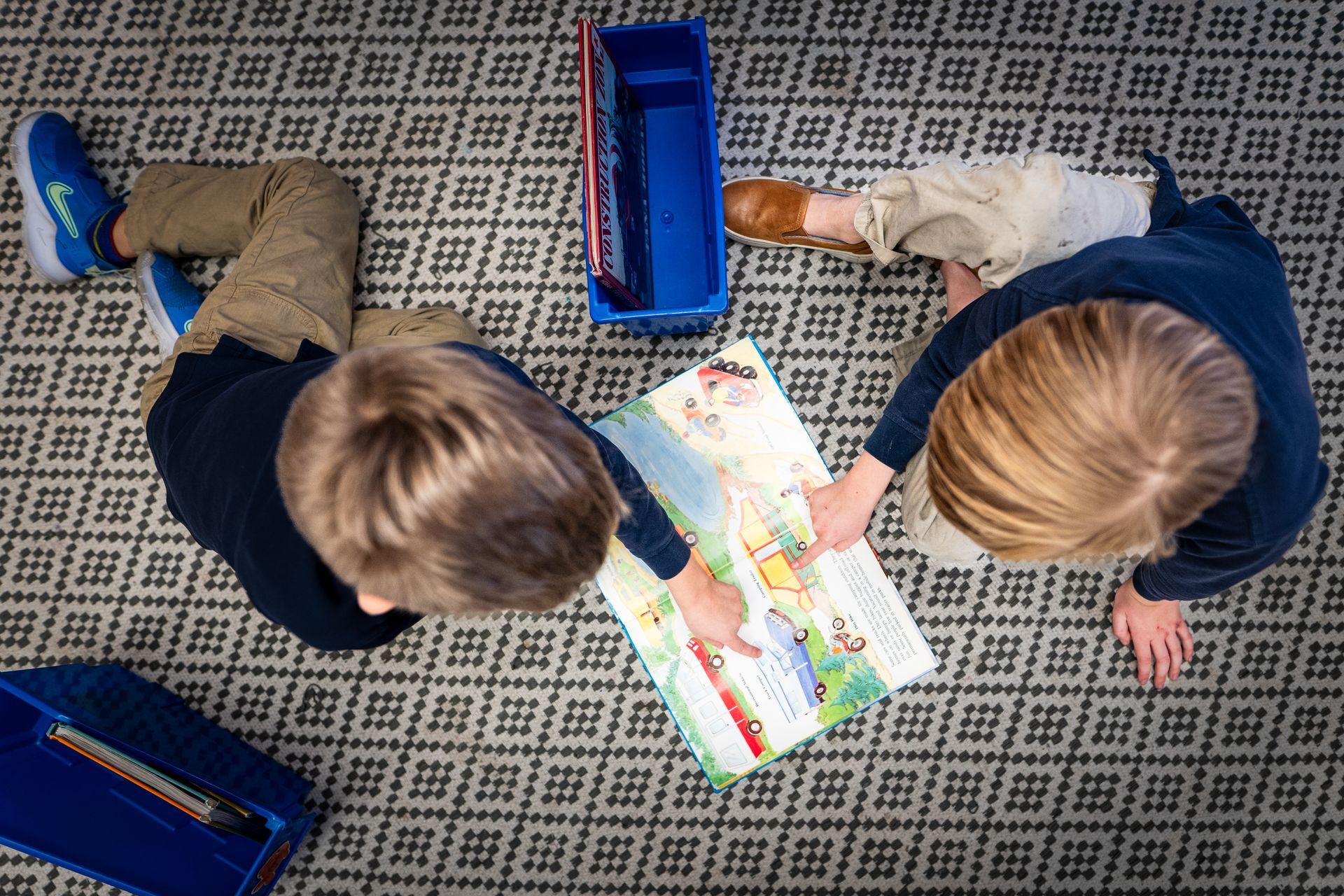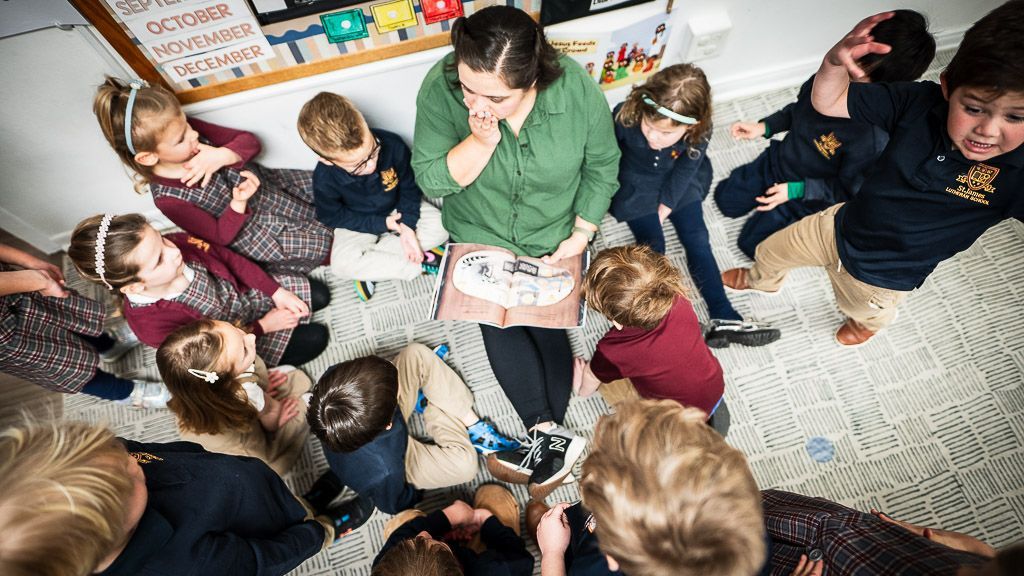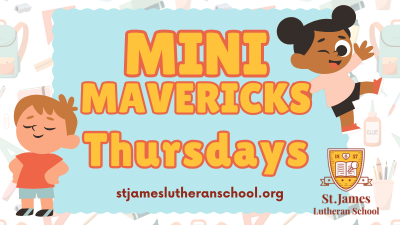Reading Instruction at St. James
Implementing the Science of Reading at St. James
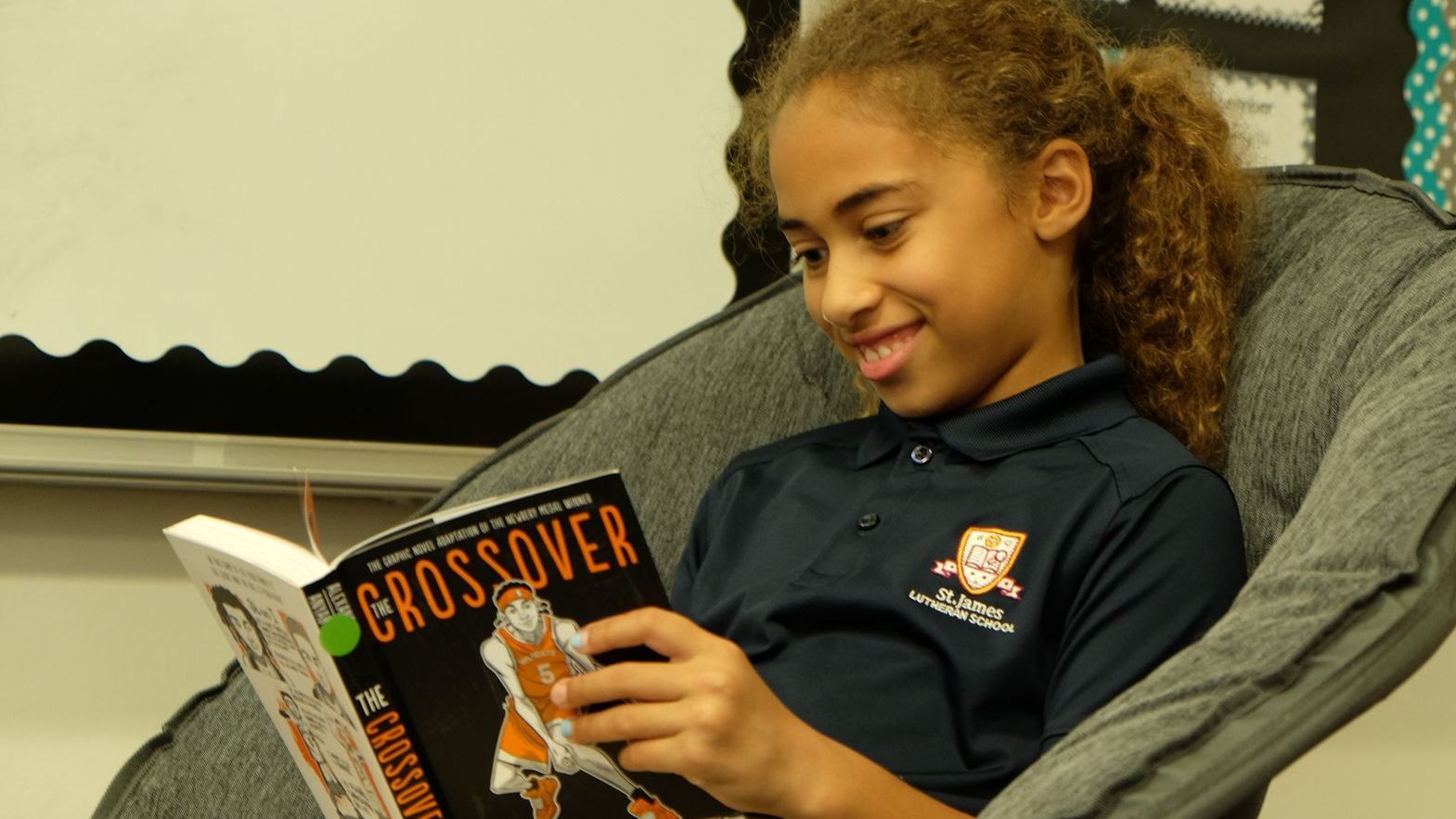
The goal is for all students to be proficient in reading by the end of 2nd grade. This allows a timely shift from students “learning-to-read” to “reading-to-learn” and being able to acquire new information & knowledge through reading.
Addressing SOR at St. James/ What staff has done to implement this into their classrooms:
The Science of Reading is a body of research from many fields, including education, linguistics, psychology, neuroscience, and speech and language pathology. The research informs us how to teach reading effectively.
Since the fall of 2022, St. James PreK-2nd grade has been engaging in discussions and learning about the Science of Reading (SOR). This has involved participating in professional development sessions and examining relevant research. Grades K, 1, and 2 have dedicated themselves to implementing six key shifts: utilizing a sound wall, word mapping, heart words, decodable texts, phonemic awareness, and syllable types.
Spelling:
At St. James, we are putting an emphasis on the process of learning how to spell rather than traditional memorization of spelling words. Through second grade, we work to help students map words and therefore store them permanently for quick retrieval during writing and reading. During daily writing activities, we encourage inventive spelling, where students use their learned phonics skills to spell words. This is a foundational step to build strong and confident readers and writers. As students learn these skills, they progress from scribbles on a page, to using phonetic spelling, to spelling words “traditionally”. At this stage, students are held accountable for the skills they have learned and have been explicitly taught. Student skills are assessed weekly through their work in writing, dictation practices, and formal assessments. As students grow older (grades 3-4), they build on previously learned skills by using a spelling program that focuses on specific phonics skills. They receive direct instruction on these skills throughout the week. The goal of these lists is to learn patterns and apply them to a variety of words in their writing, not simply memorize a list of words.
What parents can do at home:
A great way to support spelling at home is to write letters back and forth to one another. When a parent, grandparent, or other adult writes the letter to the child, they write 5-10 words at the bottom that the return letter MUST include, spelled correctly. Kids love trying to figure out where to put the words in, and they get great writing and spelling practice!
Check your teacher’s Instagram for photos of the day. Helping children recall small moments of their day is one of the best ways to improve their working memory. Ask open-ended questions like, “What was the funniest thing that happened today?” and encourage them to ask you in return. Working memory is a key factor in reading comprehension.
Have a family book club. The idea is that everyone in the family reads the same book, and then you gather to discuss and do activities. If your child is not an independent reader, you can read the book out loud. Take turns picking the book, and coming up with discussion questions. Have fun with activities like eating foods to go with the book, watching the movie, or doing crafts.
